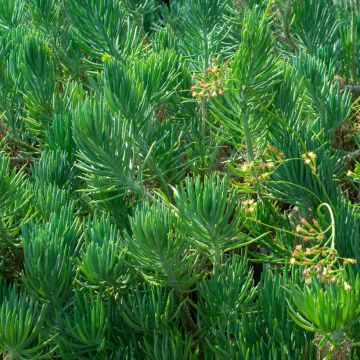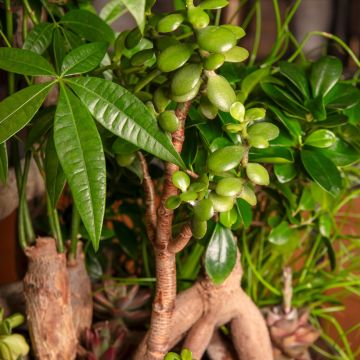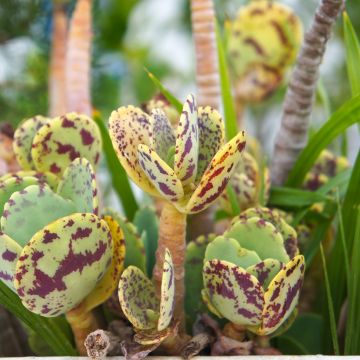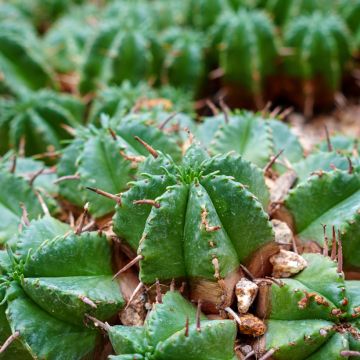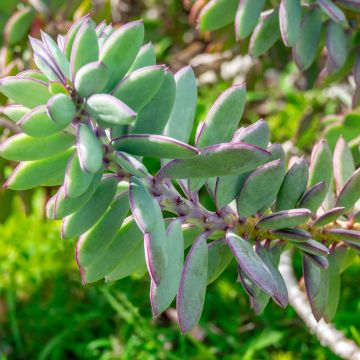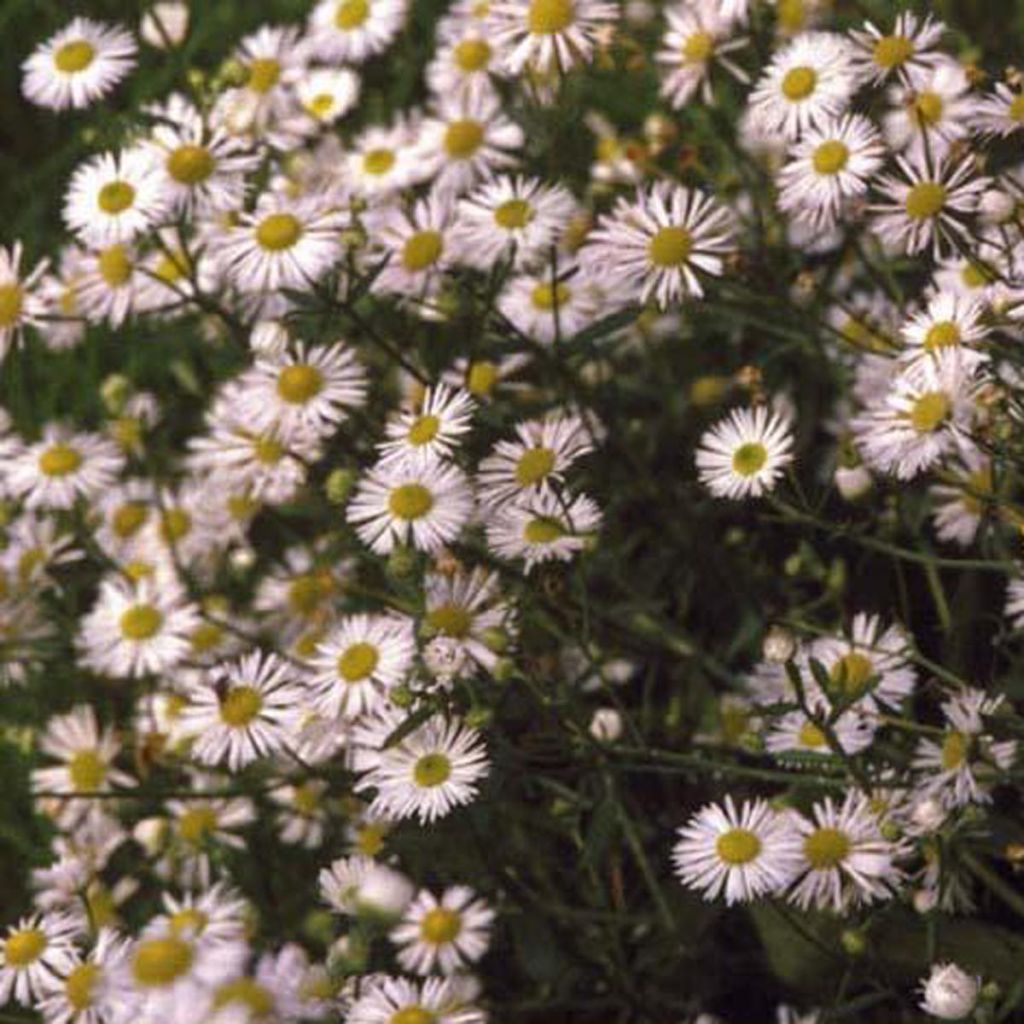

Aster ericoides f. prostratus - White Heath Aster
Aster ericoides f. prostratus - White Heath Aster
Aster ericoïdes f. prostratus
Heath Aster, White Heath Aster
Very cute but they lack a bit of substance for me!!! Are they not well positioned?
annick, 21/09/2015
Why not try an alternative variety in stock?
View all →This plant carries a 12 months recovery warranty
More information
We guarantee the quality of our plants for a full growing cycle, and will replace at our expense any plant that fails to recover under normal climatic and planting conditions.
Does this plant fit my garden?
Set up your Plantfit profile →
Description
Aster ericoides f. prostratus, also known as Prostrate Aster or Aster ericoïdes Prostrate Form, is a trailing or creeping perennial shrub that disappears for a month under a carpet of small white "daisies" with yellow hearts. This drought-resistant and very hardy plant is perfect for low-maintenance gardens, pots, terraced borders and slopes, in full sun.
Aster ericoïdes f. prostratus belongs to the Asteraceae family and is native to the eastern and central United States. It forms a herbaceous clump with a woody crown, reaching a height of 20 cm (8in) and spreading up to 50 cm (20in). Similar to Aster ericoides, it is mainly distinguished by its initially upright stems, which gracefully bend and fall close to the ground. The foliage along the branches is even smaller. It blooms in September, covering the plant with numerous small white daisy-like heads with yellow centres, sometimes tinged with purple, 1 cm (0in) in diameter.
Let the prostrate Aster trail and creep over the stones of walls overlooking a pathway or rock gardens, as its flowering is delightful. Like creeping rosemary, Artemisia schmidtiana 'Nana', Stachys lanata 'Big Ears', Aster amellus and their cultivars 'Rudolf von Goethe' or 'King George', they are beautiful in autumn and tolerate chalky and dry soils. To add a touch of lavender-pink, add Aster linariifolius. In ordinary, not too dry soil, combine Prostrate Aster with hardy chrysanthemums like 'Empereur de Chine', known and cultivated in China for over two thousand years, or Chrysanthemum 'Jules La Graveur', and Persicaria affinis 'Darjeeling Red'. The result will be incredibly beautiful. This Aster also performs well in pots.
Report an error about the product description
Aster ericoides f. prostratus - White Heath Aster in pictures
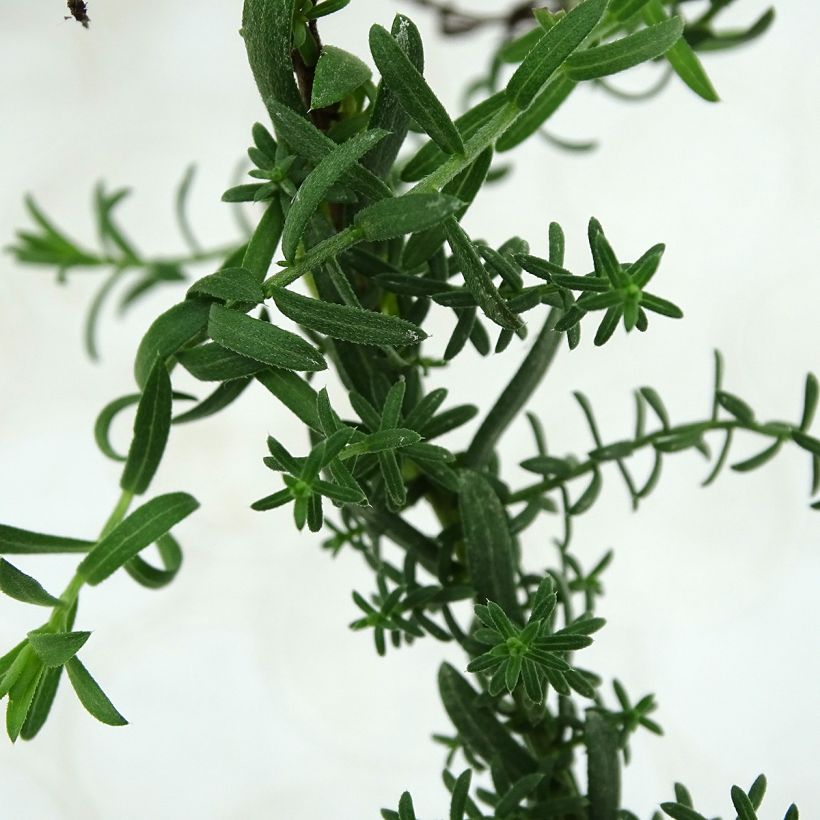

Flowering
Foliage
Plant habit
Botanical data
Aster
ericoïdes
f. prostratus
Asteraceae
Heath Aster, White Heath Aster
Symphyotrichum ericoides
North America
Planting and care
You can plant Aster ericoides f. prostratus in well-drained, rocky, sandy and even limestone and poor soil. This plant hates heavy soils that remain waterlogged in winter. Plant it early in the spring or in September. It is extremely hardy and will adapt to both the North and South. Aster ericoides is problem-free, will not require staking, is disease-free and will tolerate some drought.
Planting period
Intended location
Care
-
, onOrder confirmed
Reply from on Promesse de fleurs
Haven't found what you were looking for?
Hardiness is the lowest winter temperature a plant can endure without suffering serious damage or even dying. However, hardiness is affected by location (a sheltered area, such as a patio), protection (winter cover) and soil type (hardiness is improved by well-drained soil).

Photo Sharing Terms & Conditions
In order to encourage gardeners to interact and share their experiences, Promesse de fleurs offers various media enabling content to be uploaded onto its Site - in particular via the ‘Photo sharing’ module.
The User agrees to refrain from:
- Posting any content that is illegal, prejudicial, insulting, racist, inciteful to hatred, revisionist, contrary to public decency, that infringes on privacy or on the privacy rights of third parties, in particular the publicity rights of persons and goods, intellectual property rights, or the right to privacy.
- Submitting content on behalf of a third party;
- Impersonate the identity of a third party and/or publish any personal information about a third party;
In general, the User undertakes to refrain from any unethical behaviour.
All Content (in particular text, comments, files, images, photos, videos, creative works, etc.), which may be subject to property or intellectual property rights, image or other private rights, shall remain the property of the User, subject to the limited rights granted by the terms of the licence granted by Promesse de fleurs as stated below. Users are at liberty to publish or not to publish such Content on the Site, notably via the ‘Photo Sharing’ facility, and accept that this Content shall be made public and freely accessible, notably on the Internet.
Users further acknowledge, undertake to have ,and guarantee that they hold all necessary rights and permissions to publish such material on the Site, in particular with regard to the legislation in force pertaining to any privacy, property, intellectual property, image, or contractual rights, or rights of any other nature. By publishing such Content on the Site, Users acknowledge accepting full liability as publishers of the Content within the meaning of the law, and grant Promesse de fleurs, free of charge, an inclusive, worldwide licence for the said Content for the entire duration of its publication, including all reproduction, representation, up/downloading, displaying, performing, transmission, and storage rights.
Users also grant permission for their name to be linked to the Content and accept that this link may not always be made available.
By engaging in posting material, Users consent to their Content becoming automatically accessible on the Internet, in particular on other sites and/or blogs and/or web pages of the Promesse de fleurs site, including in particular social pages and the Promesse de fleurs catalogue.
Users may secure the removal of entrusted content free of charge by issuing a simple request via our contact form.
The flowering period indicated on our website applies to countries and regions located in USDA zone 8 (France, the United Kingdom, Ireland, the Netherlands, etc.)
It will vary according to where you live:
- In zones 9 to 10 (Italy, Spain, Greece, etc.), flowering will occur about 2 to 4 weeks earlier.
- In zones 6 to 7 (Germany, Poland, Slovenia, and lower mountainous regions), flowering will be delayed by 2 to 3 weeks.
- In zone 5 (Central Europe, Scandinavia), blooming will be delayed by 3 to 5 weeks.
In temperate climates, pruning of spring-flowering shrubs (forsythia, spireas, etc.) should be done just after flowering.
Pruning of summer-flowering shrubs (Indian Lilac, Perovskia, etc.) can be done in winter or spring.
In cold regions as well as with frost-sensitive plants, avoid pruning too early when severe frosts may still occur.
The planting period indicated on our website applies to countries and regions located in USDA zone 8 (France, United Kingdom, Ireland, Netherlands).
It will vary according to where you live:
- In Mediterranean zones (Marseille, Madrid, Milan, etc.), autumn and winter are the best planting periods.
- In continental zones (Strasbourg, Munich, Vienna, etc.), delay planting by 2 to 3 weeks in spring and bring it forward by 2 to 4 weeks in autumn.
- In mountainous regions (the Alps, Pyrenees, Carpathians, etc.), it is best to plant in late spring (May-June) or late summer (August-September).
The harvesting period indicated on our website applies to countries and regions in USDA zone 8 (France, England, Ireland, the Netherlands).
In colder areas (Scandinavia, Poland, Austria...) fruit and vegetable harvests are likely to be delayed by 3-4 weeks.
In warmer areas (Italy, Spain, Greece, etc.), harvesting will probably take place earlier, depending on weather conditions.
The sowing periods indicated on our website apply to countries and regions within USDA Zone 8 (France, UK, Ireland, Netherlands).
In colder areas (Scandinavia, Poland, Austria...), delay any outdoor sowing by 3-4 weeks, or sow under glass.
In warmer climes (Italy, Spain, Greece, etc.), bring outdoor sowing forward by a few weeks.




































